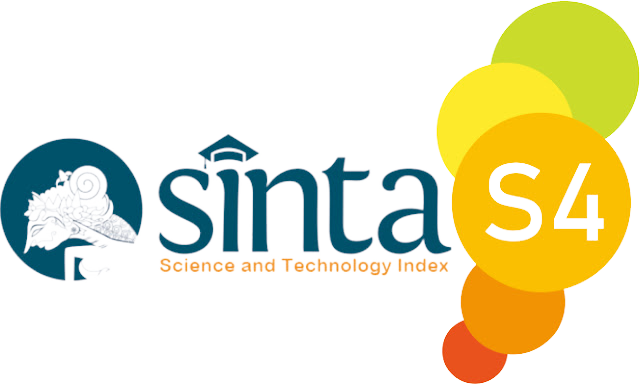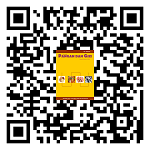Author Guidelines
PAPER FORMAT AND WRITING GUIDELINES
1. Format
The paper is typed with double spacing on A4 sized HVS paper. The margin used for each side is 2.5 cm. The font used is Times New Roman 12 points on only one side of a paper. Some figures and tables from previous publications could be attached with the author's consent. Pages should then be numbered consecutively including the appendices for table/chart/figure/photo at the end of the paper. A scientific publication commonly consists of 15 – 17 pages (about 3000 characters) includes figures and tables. Here is the structure of a research paper:
1.1. Title
There are two languages we can use in writing the title of the paper, which are Bahasa Indonesia and English. The title in Bahasa Indonesia is typed by using the capital letter at the beginning of each word (except the short words and conjunctions) by using Times New Roman 14 point with single spacing. Meanwhile, the English title is typed in italic style. The title should be simple, informative, and well represent the paper in no more than 20 words. It is better to avoid the use of general words such as the analysis, the study, the influence, etc. The use of abbreviations and the addition of Latin words is prohibited.
1.2. Author’s Name and Institution
All of the corresponding authors' names are written full without any abbreviation and title. If the author is more than one, put a numerical code (1,2,3, …) above the last name of each author. Below the name, write the corresponding address (institution address) of the written name based on the numerical code. Also include the corresponding email of the institution which allows a possible collaboration with other researchers.
1.3. Abstract
An abstract is a compact summary that represents the whole content of a scientific article. An abstract should be well written to enable the reader to comprehend the content of the article without the need to go deeper into the article. The abstract is only written in English with "ABSTRACT” as the title. It consists of no more than 250 words in a paragraph in italic style with single line spacing. The abstract includes a summary of all the important points from the article (Introduction, Research Methods, Finding, and Conclusion) without stating the chapters. The abstract doesn't include a table, illustration, references, and abbreviation. To make it concise, avoid rewriting the title on the abstract’s body.
1.4. Keywords
Keywords are the words that contain the main concept discussed in the article. The keywords are written after the title "keywords" in English, consist of 3 – 5 words below the abstract. The keywords are written in a row from specific to the general order. The good keywords should well represent the topic discussed and could be used by the reader to electronically browse the article.
1.5. Introduction
This is an introduction of the article's substance based on the topic and research problem, especially the theoretical and empirical background of the article writing process. An introduction includes explicit, simple, and clear direction, objective, and significance of the article. It is aimed to avoid substance's definition misleading, understanding, and interpretation for the readers. It contains the explanation of the background, the analyzed problems, and the objective of the research.
The beginning sentences should be initialized from one own idea, instead of referring to the other's idea. The presentation should be chronologically coherent, of which the paragraphs are logically correlated. The framework should also be presented simply and based on the theoretic concepts used to analyze and interpret the data, information, and all the findings. It is important to state the conceptual framework from the same field researcher. Include the newest work from the previous researcher or author if possible.
1.6. Methodology
The methodology includes all the steps used in writing a research paper. The methodology should be based on the methods used in the research. This section contains technical information (the description of the material, sampling technique, procedure, and data analysis) and completely elaborated if the method used is new. For the commonly used method, mentioning the references is enough. There is no need to write the research procedure in imperative sentences. A very important and specific chemical composition should be written by mentioning the producing company. The basic equipment such as scissors, measuring cup, chemical cup, pencil, and so on could be omitted. However, the specific equipment needed for the analysis (AAS, spectrophotometer, HPLC, GC, and so on) is written in detail to its specific type.
1.7. Finding and Discussion
It only contains the research findings which could be projected into text, table/chart/graphic/figure/photo included with the clear and informative explanation. The data should be systematically presented according to the method’s objectives and steps. The elaboration of the data should only include the main points. The data presented should also be well-illustrated analyzed data, instead of the raw data. The numbering should be done consecutively as mentioned in the full paper and separately attached from the text. The description of a figure is written below the figure, meanwhile, the description for a table is written above the table with a spacing from the text body. The figures and tables could be attached on different pages.
The discussion doesn't merely explain the data, but also includes interpretation of the research findings with the correlation to the previously published research finding. The explanationshould be following the research objectives and hypothesis. In this section, analysis, interpretation, and development of the idea/argumentation are carried out by correlating the idea with theories or previous studies. The result of the discussion and analysis should generate a generalization. If only, the generalization is limited to the proposed research object’s scope.
1.8. Conclusion
The conclusion is critically and carefully written by using generalization (inductive). State the conclusion of the finding and discussion briefly, concisely, without any numerical order. The conclusion also doesn't include citations and statistical analysis.
1.9. Acknowledgment
The author could thank the research funder, institution, or the contributors during the research process in the acknowledgment. In this section, the institution of the research funders should be fully written.
1.10. References
The list of references is to be alphabetized by the first author's last name. here are the examples:
a. Journal
Rueppel ml, Brightwell bb, Schaefer j, and marvel jt. 1997. Metabolism and degradation of glyphosate in soil and water. J argric food chem 25:517-528.
b. Book
Moore-landecker e. 1990. Fundamental of the fungi. Ed ke-3. New jersey:prenice hall.
c. Abstract
Kooswardhono, m, sehabudin. 2001. Analisisekonomiusahaternaksapiperah di wilayahpropinsijawabarat. Abstract of local resource based farming seminar. Bogor, 8-9 august 2001. Bidangsosialdan ekonomi-15. Page 189.
d. Proceeding
Lukiwatid.r. danhardjosoewignjo s. 1998. Mineral content improvement of some tropical legumes with glamous fungi inoculation and rock phosphate fertilization. Di dalam: proceedings of the internal workshop on mycorrhiza. Guangzhou, pr china, 6 September – 31 august 1998. Page 77-79.
e. Final project/thesis/dissertation
Ismunadji m. 1982. Pengaruhpemupukan belerangterhadapsusunankimiadan produksipadisawah. (tesis). Bogor.institutpertanianbogor.
f. Information from internet
Hansel L. 1999. Non-target effect of Bt corn Pollen on the Monarch butterfly (Lepidoptera:Danaidae).http://www.ent.iastate. edu/ensoc/ncb99/prog/abs/D81.html. (August 21st, 1999)
MendeleyCitation Style is recommended to write the references.
Clickhereto view the journal’s template.
2. General Requirement
- The paper sent has not been published before and in a form of research findings or literature review which are added with ideas and implementation in particular actual cases within the scope of diet and nutrition.
- The author sends the paper both in hard copy version (2 copies) and soft copy version (in a CD or sent via e-mail).
- The publication is scheduled for April and October.
- The paper for the upcoming edition should be received no later than 3 months before the publication schedule. The paper would be proofed by the peer reviewers as the editorial committee to decide whether a paper is accepted or not.














